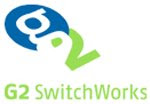- Have any questions?
- Office: +1 (650) 345-8510
- Mobile: +1 (650) 576-6916
- norm@traveltechnology.com
GNEs and GDS bypass
I just returned from a two week business trip to the Middle East working with a client in Kuwait. I’ve fallen behind again in my blog entries and I will try to rectify that over the next few days.
First up, a discussion of a recent article in Flight Magazine about demise of the so called “GNEs” (GDS New Entrants or “Genies”). This article bemoans the lack of success of these alternative distribution initiatives citing the sale of the G2Swithworks’ agent POS to Travelport and the refocus of ITA Software to create a new CRS for Air Canada, as the end of an industry push towards alternative distribution. This article missed a fundamental issue in regards to the GNEs, the source of their difficulties has to due with poor market positioning. To set the record straight, the term GNE was coined by Derek Lewitton while he was Director of Distribution Strategy and Planning at United Airlines. It was 2005 the GDSs and the airlines were in heated discussions regarding new agreements. The prior few years had seen a reduction in segment fee charges by the GDSs related to the airlines willingness to provide total contact (including Web only fares). Derek organized a meeting with large corporate customers and TMCs introducing these new companies (ITA software, G2 Switchworks, Farelogix) labeling them GNEs. Also in attendance were TRX and Cliqbook. The travel and general press latched on to this labeling and throughout the year there were a flood of articles stating how these GNEs would use modern technology to bypass the traditional mainframe based GDSs. The root of the problem was not in these new companies’ technology, but rather the positioning of these firms as replacements for the GDS. This was an absurd notion from the start. The power of the GDS lies in the 100,000 of travel agency desktops deployed as well as the engine behind online travel agencies (OTAs) such as Expedia. No single company, no matter how well funded can displace the dominance of the GDSs in the market overnight. In fact, one of the black holes that drained lots of cash and development time at G2 Switchworks was the development of a neutral agent POS. Meeting the complex requirements of the travel agent is not an easy task as many prior attempts (e.g. TRX’s SELEX) have yielded limited results. Ironically it was this very application that was desperately needed by Travelport who operate three different mainframes (e.g. Apollo, Galileo and Worldspan). Since 2005 I have been involved with a number of initiatives in both the corporate and leisure space which involved a direct connection into an airline’s CRS bypassing the GDS. The reality is that bypass is an evolutionary not revolutionary process. In fact the GDSs themselves are working to migrate their remaining legacy mainframe technologies to more distributed server based computing. The bottom line is that traditional GDS bypass will continue to happen especially as airlines unbundle their services to maximize ancillary revenue. ITA Software’s re-engineering of the Air Canada CRS attacks the issue at the source as most airlines operate their CRS as a partition of the GDS with the same limitations that exist with mainframe GDS technology. The most striking limitation is the coupling of the passenger information with the transaction symptomatic of a 1960s IT design created to maximize throughput during an era of very limited bandwidth. With the need for airlines to become more customer centric, this coupling prevents dynamic pricing based on customer value, a basic tenant of CRM. The evolution away from this legacy environment will continue as the GDSs evolve and alternative distribution continues to gain steam on an individual project basis. This is all happening away from the scrutiny of the travel press, until the next round of GDS / airline negotiations. This topic is far from dead just not quite as public as it was in 2005.

